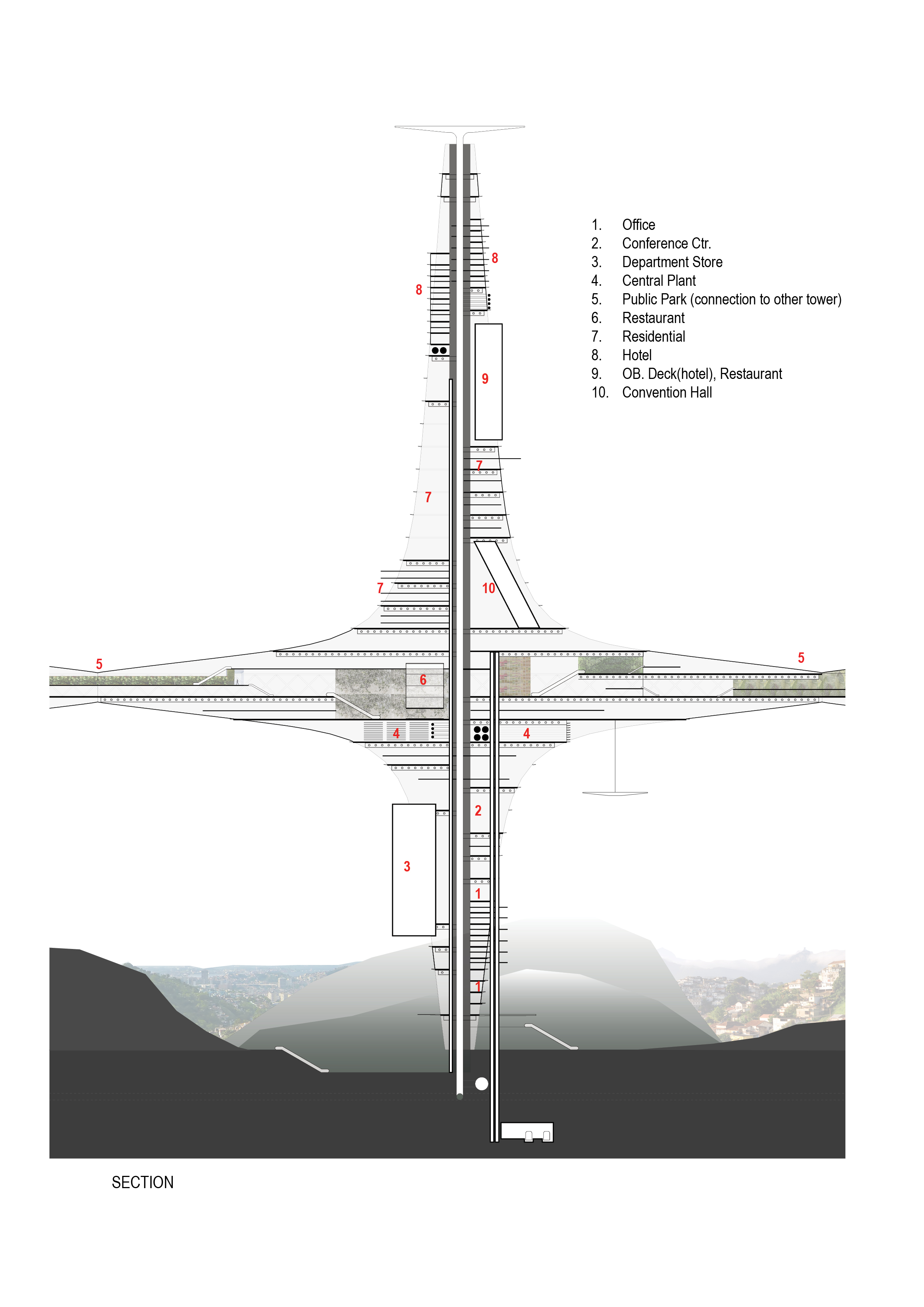
Worlds of Cityvision Exhibition
WUHO Gallery Los Angeles, March 6-23 2014
Exhibition Opening: March 6, 2014 6-9 pm
http://architecture.woodbury.edu/wuho/?p=1682
Tensile City Jin Young Song and his team has received Honorable mention from 2013 Rio Competition. Rio Cityvision Competition had 125 registered groups and received 68 proposals from all five continents. The Rio de Janeiro ideas have been judged by an international jury which had as president Alejandro Zaera-Polo and again Jeffrey Inaba, Jeroen Koolhaas, Hernan Diaz Alonso, Pedro Rivera and Cristiano Toraldo di Francia.
http://www.cityvisionweb.com/competitions/riodejaneiro/
http://www.bustler.net/index.php/article_image/rio_de_janeiro_cityvision_competition_winners_announced/image/12584
The winning project is exhinited at Ara Pacis museum in Rome. September 7, 2013

The essence of the problem in Rio de jJaneiro is the sociocultural, political and economic polarization. Favelas around the edge of the city represent the people who are on the edge of their life, pushed away from the competition with inequality. Public policy has little control in crowding, poor nutrition, pollution, disease and unsanitary conditions. Favelas have been expanding as the boundary of the city does and this condition must have a cure imminent, rather than gradual renovation or partial bandage. Without subverting the current sociocultural and physical structure of city, the polarization of two inconvenient presents cannot converge into a meaningful future. Tensile City is a network of towers suggesting a radical and immediate cure for the current condition.

For more than one hundred years after the birth of the skyscraper, our tower designs have been confined by a simple notion, a rigid core and heavy perimeter columns. The city has been the sum of those structurally independent towers. We envision a future skyscraper typology that is more efficient and unburdened by large vertical compression members at the perimeter and these towers are horizontally connected by bridge- like optimized tensile forces that achieve lateral stability from each other. This structural concept with tensile forces and a new idea of organization between towers result in uninterrupted views, open space planning, efficient day-lighting, and a noble concept for city infrastructure.
Once, before Modernism, the major buildings have represented the culture, history and nation. Greek architecture represented the sophisticated philosophy by proportions and order. Roman architecture represented the Empire. Modernism has flattened these ornamental qualities to represent the new machine world by abstraction and transparency. Now, most of the towers in major cities no longer host the public function, but stands for the private profit. Simultaneously, they wish to be an icon of the city, representing its “globalness” while being contemporary. Architects work with differentiations on massing and envelopes within constraints. Ironically, the sum of these cosmetic differences is the generic city. We are witnessing the major architectural projects hosting mere differences from other buildings. Tensile City, against the act of creating differentiations, avoids any style or representation of ideology, but pursues rational form with physics optimizing the tensional forces amongst the towers. This serves to provide a neutral form allowing public infrastructure equity to the people.
Commodification in the capitalistic world has made architecture in the private sector a different form from others, ignoring the real social, cultural and urban problems. Facing the great challenge of Rio de Janeiro, the Tensile City emerges as a radical and immediate cure.
Team member: Jin Young Song, Yoon Kee Hong, Kyo Seon Lee



